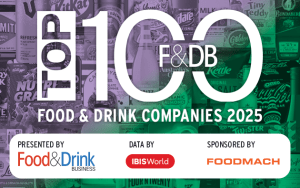Blister pack recycling initiative, Pharmacycle, is gaining momentum on the back of successful trials and interest generated from ABC’s War on Waste series. PKN spoke to Pharmacycle’s head of business development, Jason Rijnbeek, to find out more.
In November last year, the initiative ran a successful trial in collaboration with Blooms The Chemist, which saw 110 stores across the nation act as collection points for used blister packs.
After being collected, the blister packs are sent to its facility in Sydney, where they are put through a series of processes, including shredding, grinding, air-density separation and electrostatic separation.
The company claims the result is 100 per cent of material is recovered: the aluminium is used to produce aluminium pucks for steelmaking, or as part of a technology for thermal energy storage; the plastic currently is used for eco-aggregate, although the desire is to be able to put it back into packaging.
Rijnbeek explains that, following on from the trial, the company “started a conversation with National Pharmacies, which is a retail pharmacy chain, primarily located in South Australia”, and goes on to add that the chain has more than 40 stores in South Australia, “with a handful in New South Wales and Victoria too”.
“Together, those two brands allowed us to have a footprint of around 160 locations,” he says.
Following on from those partnerships, Pharmacycle has continued to grow. “From November, to where we are now, we’ve had another 60 partners joining us, mostly independents,” he explains, clarifying that independent means both single pharmacies, and those operating under a banner group.
Being featured on the latest War on Waste series on ABC has given the project great publicity – Rjinbeek says the public is showing huge interest in wanting to recycle blister packs, and conversations have now started with pharmaceutical industry associations and manufacturers.
However, he points out the main barrier for growth is cost. “We’re probably about 60 per cent the cost of our major competitor, but that is still a barrier to entry for pharmacy,” he says. “To address that we plan to work collaboratively with industry to explore what a roadmap looks like over the next two to three years,” he adds, clarifying that industry includes manufacturers as well as large retail supermarkets.
“What we envision is the opportunity for brands – that could be manufacturers or retail brands – to work collaboratively in the short term to expand, to work towards a product stewardship scheme which ticks all the boxes for governance and equitability.”
Rjinbeek says that the War on Waste series will hopefully be a catalyst for encouraging more of industry to get on board. He cites the example of Sprite: “When the series showcased the green bottle, lo and behold out in front of our local Coles, there’s a billboard with a beautiful, clear PET Sprite bottle right now.”
He emphasises that with anti-waste consumer sentiment running high, “now is the time to come together to address the issue as a collective and do something which is seen by the public as being positive”.
There’s still a way to go though, as Rijnbeek says, “We’ve recycled about 13 tonnes of blister packs, but we estimate there’s about 2000 to 3000 tonnes of blister packs entering the market in Australia. We are a drop in the ocean at this point in time. We would love to be achieving 500 tonnes of blister packs a year.”





